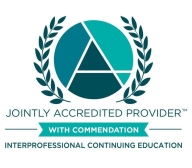
CC TiP - Cohort #24.01
Program Description
This is an intensive program focusing on assessment and treatment of critical care patients. Based on adult learning theory principles, the course will offer multiple modalities of instruction: self-directed learning activities, didactics, case studies, role playing, discussion and reflection, skills practice, simulation, and problem solving. Participants will spend a total of 76 hours to accomplish specific objectives, followed by formal debriefing each day to enhance the learning process.
Target Audience
Registered Nurses Transitioning to Critical Care
Learning Objectives
After Attending This Activity Learners Should Be Able To:
- Demonstrate a consistent and systemic approach to assessment of critically ill patients, including:
- Identification of the assessment priorities for different types of assessments: Pre-arrival assessment, admission assessment, doorway assessment and focused assessment.
- Discuss appropriate level of prioritization in response to findings, including identification of findings that require immediate action.
- Best practice approaches for neuro assessments and how to assess for specific conditions such as delirium (in verbal or non-verbal patients) or stroke.
- Explain the primary and secondary survey in trauma patients utilizing TNCC Guidelines
- Discuss the etiology, pathophysiology, clinical presentation, patient needs, common complications, and management principles for the following diagnoses:
- Cardiomyopathy
- Heart failure
- Hypertensive crisis
- Shock (hypovolemic, cardiogenic, distributive, and obstructive)
- STEMI
- Summarize assessments, diagnostic studies, management priorities, and treatment plan for a patient with the following conditions:
- Critically ill pregnant or postpartum patient
- Prolapsed cord
- Postpartum hemorrhage
- Pre-eclampsia
- Miscarriage
- Placenta previa
- Abruptio placenta
- Hematologic emergencies in critical care
- Ischemic stroke or hemorrhagic stroke
- Resuscitation of a trauma patient
- Critically ill pregnant or postpartum patient
- Review important considerations for patients with the following conditions:
- Patient complaining of abdominal pain
- Patent experiencing common oncologic emergencies
- Patient presenting with abnormal electrolytes
- Patient requiring hemodialysis in critical care oncologic emergencies seen in critical care
- Patient who is a potential donor, including process to contact Donor Network
- Patient with upper vs. lower GI bleed
- Interpret blood gas results for acid-base and oxygenation abnormalities.
- Demonstrate how to manage the PA line and the interpretation for waveforms for central venous pressure, right atrial pressure, right ventricular pressure, pulmonary artery pressure and pulmonary capillary wedge pressure.
- Explain the use of medications used to improve cardiac output and increase/decrease afterload and preload.
- Describe best practices in the nursing care and management of a mechanically ventilated patient as well as engage in discussion about your role as a change agent to improve these practices.
- Formulate an interprofessional care plan for a patient at risk for delirium while considering both physiological and psychological needs of the patient as well as any interdependent needs of the family.
- Discuss importance of ongoing self-directed learning and the professional development benefits of membership with the American Association of Critical Care Nurses (AACN) including what is needed to take the CCRN exam.
References for Self-Directed Learning in Compliance with Assembly Bills 1195 & 241- Providing Culturally Appropriate Care which is Free of Implicit Biases:
- McPeake, J., Boehm, L., Hibbert, E., Hauschildt, K., Bakhru, R., Bastin, A., Butcher, B., Eaton, T., Harris, W., Hope, A., Jackson, J., Johnson, A., Kloos, J., Korzick, K., McCatrney, j., Meyer, J., Montgomery-Yates, A., Quasim, T., Slack, A., Wade, D., Still, M., Netzer, G., Hopkins, R., Mikkelsen, m., Iwashyna, T., Haines, K. & Sevin, C. (2021). Modification of social detemrinants of health by critical illness and consequences of that modification for recovery: An international qualitative study. BMJ Open; 12(9). http://dx.doi.org/10.1136/bmjopen-2021-060454
- Alspach, J.G. (2018). Implicit bias in patient care: An endemic blight on quality care. Critical Care Nurse, 38(4), 12-16. https://doi.org/10.4037/ccn2018698

Disclosure of Financial or In-Kind Commercial Support & Conflict of Interest
No one involved in the planning or presentation of this educational activity have any relevant financial relationship(s) to disclose with ineligible companies whose primary business is producing, marketing, selling, re-selling, or distributing healthcare products used by or on patients. No financial or in-kind commercial support was received to produce or promote this educational activity. – Provider Designee/Verification: Kerri Maya, MSL, RN
Accreditation

In support of improving patient care, Sutter Health, is jointly accredited by the Accreditation Council for Continuing Medical Education (ACCME), the Accreditation Council for Pharmacy Education (ACPE), and the American Nurses Credentialing Center (ANCC), to provide continuing education for the healthcare team.
Credit Designation Statement
Sutter Health designates this LIVE activity for a maximum of 76.0 AMA PRA Category 1 Credits™ for non-physicians and 76.0 continuing professional development contact hours for nurses. Learners should claim only the credit commensurate with the extent of their participation in the activity.
Attendance & Credit Claiming
Text the 6-letter attendance verification code to (916) 866-7913 to claim credit.
Available Credit
- 76.00 ANCC
Nursing Credit - American Nurses Credentialing Center (ANCC)
Sutter Health designates this Live activity for a maximum of 76.00 ANCC contact hour(s). Nurses should claim only the credit commensurate with the extent of their participation in the activity.
- 76.00 CA BRN
Nursing Credit - California Board of Registered Nursing (CA BRN)
This activity is approved for 76.00 contact hour(s) by Sutter Health, which is an approved provider by the California Board of Registered Nursing. (Provider Number 17182). Nurses should claim only the credit commensurate with the extent of their participation in the activity.
For this page, please ignore the "prerequisite" and simply click on the teal "Take Course" button above.

 Facebook
Facebook X
X LinkedIn
LinkedIn Forward
Forward